Mycoplasma: New, Emerging Issues
Two related mycoplasma bacteria cause lameness, respiratory concerns
February 18, 2011

Mycoplasma pneumonia has long plagued our industry with chronic respiratory challenges. Two relatives to mycoplasma, M. hyosynoviae and M. hyorhinis, have gained more attention recently.
Mycoplasma hyosynoviae infects the upper respiratory tract and settles in the tonsil. The bacteria-like organism can be found in the bloodstream, 4-10 days post-infection, and may settle in joint tissues. The hock and stifle joints are most affected, resulting in lameness without fever. The joints may be swollen and puffy. Typically, pigs are 10 weeks of age or older.
Mycoplasma hyorhinis is also a common inhabitant of the respiratory system of pigs. M. hyorhinis can have multiple clinical signs: rhinitis, pneumonia, polyserositis and arthritis. The organism is easily cultured from healthy and diseased animals, which can make diagnosis confusing. Recently, M. hyorhinis has been diagnosed with arthritis and polyserositis, often with Haemophilus parasuis in nursery pigs.
Most scientists would concur that M. hyosynoviae and M. hyorhinis are not new “bugs” to our industry, but are detected more frequently due to improved laboratory techniques. They may also be more present clinically today due to the elimination of other bacterial and viral agents.
Case Study No. 1
A hotel-style nursery (nursery with multiple rooms) attached to a 1,500-sow complex experienced respiratory issues and fall-behind pigs at 14 days postweaning. I noticed an increase in dry, hacking cough and sneezing, primarily in pigs 5-8 weeks of age. As respiratory signs increased, pigs became anorexic, rough hair coated and very unthrifty. Mortality was 5-7%.
Environmental conditions, including temperature and humidity, were acceptable, although pigs are typically double-stocked for the first 3-4 weeks postweaning and become overcrowded by the time pens are thinned down to proper pig density. Multiple necropsies were performed, which had gross lesions consistent with Streptococcus suis and/or Haemophilus parasuis (HPS). Diagnostics confirmed strep, HPS and salmonella group B along with M. hyorhinis.
Our initial control focused on strep and H. parasuis with injectable and water-soluble medications. Results were mixed as some groups demonstrate no clinical problems, and others displayed symptoms described earlier.
We are investigating the relevance of M. hyorhinis and considering further control measures. These may include autogenous vaccine for piglets and water/feed medications labeled for mycoplasma control.
Case Study No. 2
A 300-sow, farrow-to-finish, antibiotic-free production system complained about lameness and downer pigs, 2-4 weeks postweaning. The entire production system is outside with sows farrowing in huts, and pigs being raised in large lots consisting of dirt, pasture and wooded areas. Pigs are weaned at 8 weeks of age and routinely vaccinated for mycoplasma, atrophic rhinitis, erysipelas and circovirus.
Upon examination, several pigs were down in their rear limbs, or “dog sitting.” Others were reluctant to move. Some pigs had moderately swollen hock joints, while others exhibited no swelling. The owner had already treated several pigs with erysipelas antiserum and penicillin, with minimal response.
Diagnostics included joint fluid, joint swabs and submission of the entire rear limb. Cultures were positive for M. hyosynoviae. Injectable treatments with lincomycin were begun, and pigs with minimal lameness recovered well. Other pigs with more severe clinical signs did not respond to treatment.
Future preventive therapy included the use of a step-down protocol of lincomycin in the feed for the first six weeks postweaning. No other cases have been identified.
Case Study No. 3
A producer with a 4,800-head, wean-to-finish barn reported downer pigs, side paddlers and extensive lameness at 10 weeks post-arrival. The pigs were single-sourced and had gotten off to a great start with few postweaning scours and no respiratory challenges.
The owner sorted off the majority of acutely affected pigs, but several others with moderate lameness were noted. Two separate diagnostic submissions yielded strep. Antibiotic treatments were not entirely successful. Mycoplasma was suspected as a contributing factor, and lincomycin soluble and feedgrade formulations helped alleviate clinical signs and new cases.
Subsequent pig groups have not demonstrated the same clinical signs. No prevention or treatment measures were put in place for future groups.
You May Also Like



